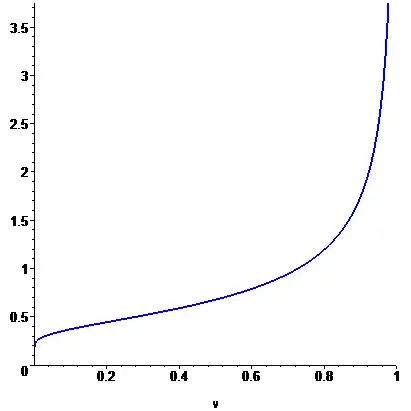Let $W_1,W_2$ be independent Gamma random variables with $\alpha=1/2$ and $\beta=1$.
Then $e^{-W_1}\,e^{-W_2}=e^{-(W_1+W_2)}$ where $W_1+W_2$ is exponential with mean 1.
An easy transformation argument shows that $e^{-(W_1+W_2)}$ has a uniform(0,1) distribution.
$e^{-W_1}$ and $e^{-W_2}$ are i.i.d. random variables whose product is uniform(0,1).
What kind of density does $e^{-W}$ have? The density of $W$ is
$f(w)={1\over\sqrt{\pi w}}\, e^{-w}\, {\bf 1}_{(0,\infty)}(w).$ Setting
$X=e^{-W}$, we have $|dw/dx|= 1/x$ so that the density of $X$ is
$$g(x)= {1\over\sqrt{\pi \log(1/x)}} e^{-(-\log(x))} (1/x) {\bf 1}_{(0,\infty)}(-\log(x))
= {1\over\sqrt{\pi \,\log(1/x)}}\, {\bf 1}_{(0,1)}(x).$$
Here is a graph of this function:

